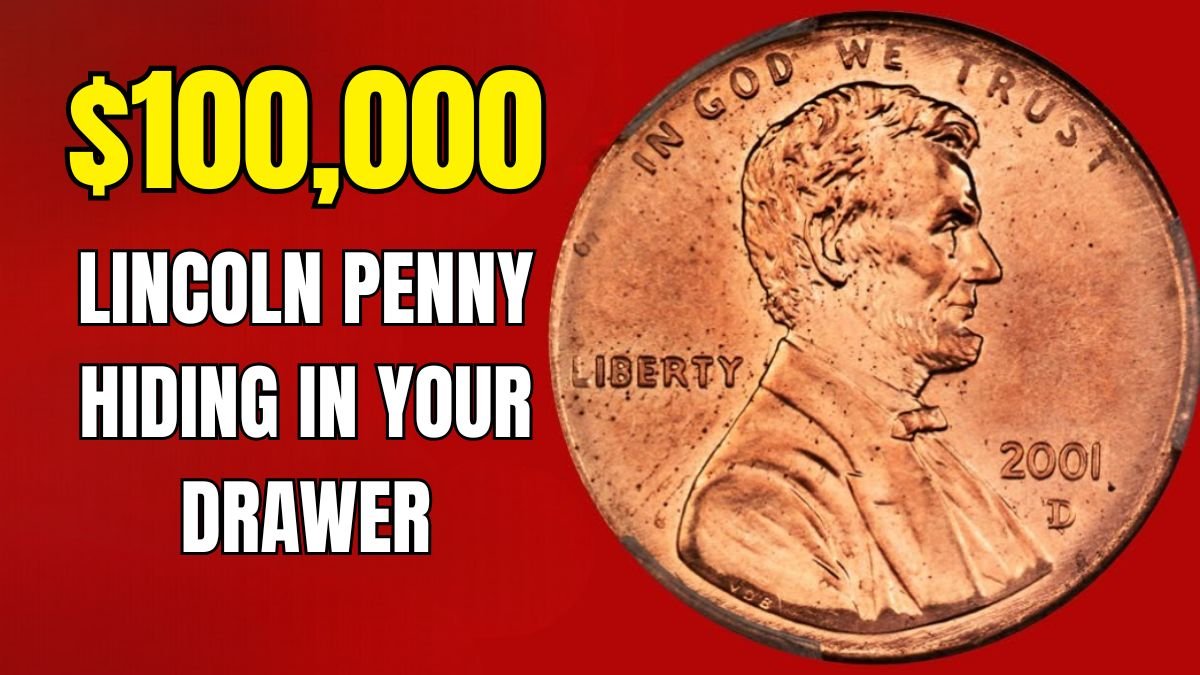We all have old coins and notes stashed somewhere in our homes. Sometimes they’re found in our grandmother’s closet, sometimes forgotten in a piggy bank, and sometimes we simply ignore them, thinking they’re worthless. But have you ever considered that one of these coins could change your fortune? Yes, a seemingly ordinary Lincoln penny from the United States could be worth over $100,000 if it turns out to be an “error coin.” The 2001-D Lincoln cent mule error coin, which recently gained attention, is one such rare coin, difficult to identify but offering significant returns.
What is the 2001-D Mule Error Coin and why is it so special?
In the world of numismatics, “mint errors” have always been a topic of interest for collectors. Mint errors occur when a mistake is made in the coin-making process, resulting in the coin being struck with the wrong design or the wrong metal. Of these, “mule errors” are considered extremely rare. “Mule” means two different designs mistakenly printed on a single coin.
The 2001-D Lincoln cent mule error coin is a prime example. Typically, a Lincoln penny features Abraham Lincoln’s face on the obverse and the Lincoln Memorial on the reverse. However, this error coin features the reverse of a Roosevelt dime. This means that the designs of two different coins are combined on a single coin. This error was so significant that it immediately became a topic of discussion among coin collectors.
According to experts, this coin was accidentally minted at the Denver Mint and put into circulation. It may have been struck in a normal cash transaction and someone used it, mistaking it for a common penny. However, its rarity is such that it is considered one of the rarest American coins in the world.
Why is this coin more valuable to collectors than gold?
For collectors, rare coins aren’t just a piece of metal; they’re a piece of history. Owning a coin that’s likely minted by mistake and likely only exists in small numbers is a matter of pride for collectors. This explains why the 2001-D mule error coin commands such a high price.
According to CoinWeek, this error coin “falls into the category of mint errors that were likely created by mistake and released into circulation unnoticed.” This means it wasn’t a counterfeit or a deliberate act but a genuine mistake on the mint’s production line. And this very error makes it priceless.
Record Auction Prices for This Coin
Only a few pieces of this coin have been discovered so far, and each time, their prices have broken auction house records. Collectors have bid millions of dollars for it on major platforms like Heritage Auctions.
Some prominent auction examples are:
- PCGS MS66RD: Sold for $114,000 (June 17, 2021)
- PCGS MS65RD: Sold for $78,000 (February 24, 2022)
- PCGS MS65RD: Sold for $66,000 (August 24, 2022)
- PCGS MS66RD: Sold for $114,000 (January 11, 2024)
It’s clear that if you have this coin and it’s in good condition, its price could reach six figures. Reports suggest that even mule error coins in poor condition have sold for up to $20,000.
How to Identify If You Have This Coin?
Many people don’t carefully examine their coins and spend them thinking they’re ordinary. But if you examine them carefully, identifying a 2001-D Lincoln mule error coin isn’t difficult.
- Look for the year and mint mark: it will say “2001-D.” The “D” means the coin came from the Denver Mint.
- On the front: Abraham Lincoln’s face will be in a completely normal print.
- On the back: This is where the real difference lies. Instead of a Lincoln Memorial, you’ll see a Roosevelt dime design.
If so, you could have a fortune worth millions of rupees.
Poor Condition Coins Are Worth It
The coin doesn’t necessarily have to be in mint condition (perfectly new and without scratches). Collectors are willing to pay such high prices for this coin that even coins in poor condition can fetch a substantial sum. According to a report by GoBankingRates, such coins can fetch up to $20,000 even in poor condition.
What to do if you find this coin?
If you believe you have this rare coin, the first step is to have it evaluated by a certified coin grading service like PCGS (Professional Coin Grading Service) or NGC (Numismatic Guaranty Company). These companies will certify your coin’s authenticity and assign its grade. The higher the grading, the higher the price.
After this, you can sell it to a reputable auction house like Heritage Auctions or a trusted coin dealer. Remember, auctions for such rare coins are held on specialized platforms, not in general stores.
Conclusion
Often, we dismiss small coins as trivial, discarding them in a drawer or spending them. But that small coin could change your fortune. The 2001-D Lincoln cent mule error coin is a prime example. Its rarity and demand make it a treasure trove for collectors.
If you have a collection of old coins or stumble across a 2001-D Lincoln penny, examine it carefully. Who knows, it might be the same error coin worth over $100,000.
So the next time you look at your coins, don’t just ignore them. Perhaps a life-changing treasure lies within them.
FAQs
Q. What is the 2001-D Lincoln cent mule error coin?
A. It’s a penny with Lincoln’s obverse and a Roosevelt dime reverse, mistakenly minted in Denver.
Q. How rare is the 2001-D mule error penny?
A. Extremely rare, with fewer than 10 known examples.
Q. What is the value of the 2001-D mule error coin?
A. Depending on condition, it can sell from $20,000 up to over $100,000.
Q. How can I check if I have this rare penny?
A. Look for a 2001-D Lincoln penny with a Roosevelt dime design on the back.
Q. Where can I sell a mule error coin?
A. Through professional grading services and reputable auction houses like Heritage Auctions.
